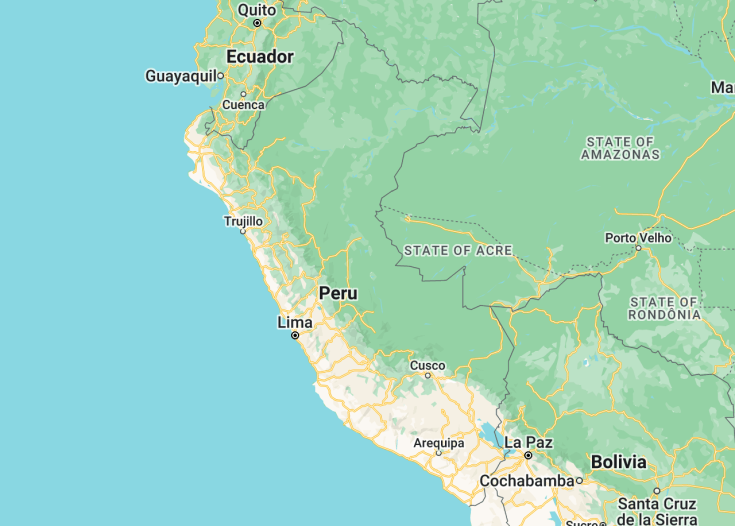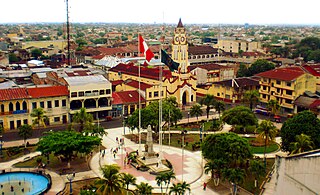Peru is a captivating destination that offers a wealth of history, culture, and natural beauty. From the iconic ruins of Machu Picchu to the vibrant streets of Lima, there is something to enchant every traveler. Explore the awe-inspiring landscapes of the Sacred Valley, sample delicious Peruvian cuisine, and immerse yourself in the fascinating traditions of the indigenous people. Whether you’re a history buff, adventure seeker, or simply looking to relax on golden beaches, Peru has it all.
Don’t forget to acclimatize to the high altitude before embarking on any strenuous activities.
Embark on a breathtaking trek to experience the majestic beauty of the Andes and discover hidden Inca ruins along the way.
Peru: journey to the heart of the Inca Empire.
| Capital | Lima |
| Time in Peru | GMT -5 |
| Language spoken | Spanish |
| Population | 33 million (World Bank, 2021) |
| Religion | Roman Catholicism (76%) Evangelicalism (14%) Other Christian (4.8%) Other religions (4.2%) None/Atheist (2.9%) |
| Currency | Peruvian Sol (S/, PEN) |
| Airports | Jorge Chávez International Airport (Lima) Alejandro Velasco Astete International Airport (Cusco) Rodríguez Ballón International Airport (Arequipa) FAP Captain Guillermo Concha Iberico International Airport (Piura) |
Peru is a captivating country in South America, known for its rich history and diverse landscapes. It is home to ancient ruins, mystical civilizations, and breathtaking natural wonders. With its intriguing past and vibrant present, Peru offers a blend of tradition and modernity that entices travelers from around the globe.
Where is Peru located?
Peru is located on the western coast of South America. It shares borders with Ecuador, Colombia, Brazil, Bolivia, and Chile. Its stunning coastline stretches along the Pacific Ocean, while the majestic Andes Mountains dominate its interior landscape.
What is Peru famous for?
Peru is famous for its ancient civilizations, most notably the Inca Empire. The iconic archaeological site of Machu Picchu is a testament to the advanced engineering and architectural skills of the Incas. Peru is also renowned for the Nazca Lines, mysterious geoglyphs etched into the desert floor, and the vibrant capital city of Lima, with its fusion of Spanish, Indigenous, and Afro-Peruvian cultures.
History
The history of Peru is a fascinating journey that spans thousands of years. The country has a rich and diverse cultural heritage, with influences from various indigenous civilizations, as well as the Spanish colonial period and the modern era. The history of Peru can be divided into several distinct periods, each marked by significant events and developments.
Pre-Columbian Era: 14,000 BCE – 1532 CE
The earliest evidence of human habitation in Peru dates back to around 14,000 BCE, when hunter-gatherer societies began to settle in the region. Over time, various complex civilizations emerged, such as the Norte Chico, Moche, and Nazca cultures. These civilizations left behind impressive architectural marvels, intricate artwork, and advanced agricultural systems.
One of the most well-known civilizations in ancient Peru is the Inca Empire, which existed from the 13th century until the arrival of the Spanish conquistadors in 1532. The Incas built a vast empire that stretched along the Andes Mountains, with their capital city, Cusco, serving as the political, administrative, and religious center.
Spanish Colonial Period: 1532 – 1824
In 1532, the Spanish conquistador Francisco Pizarro arrived in Peru and began the conquest of the Inca Empire. The Spanish established a colonial administration and imposed their culture, religion, and language on the indigenous population. The colonization of Peru led to the exploitation of its resources, particularly silver and gold.
The colonial period was marked by social and economic inequalities, as indigenous people were subjected to forced labor and various forms of oppression. However, over time, a distinct mestizo culture emerged, blending Spanish and indigenous traditions.
Independence and Republic: 1824 – Present
Peru gained its independence from Spain in 1824, following the heroic efforts of revolutionary leaders such as José de la Riva-Agüero, José Olaya, and José de la Mar. The country went through a turbulent period of political instability, with frequent changes in government and conflicts.
Throughout the 19th and 20th centuries, Peru faced various challenges, including border disputes, economic crises, and social inequality. However, it also witnessed periods of progress and cultural resurgence, with advancements in education, infrastructure, and the arts.
Today, Peru is a vibrant and diverse country that celebrates its indigenous heritage while embracing modernity. It is known for its archaeological sites, such as Machu Picchu and the Nazca Lines, as well as its rich cultural traditions, culinary delights, and breathtaking natural landscapes.
Visit Peru
What to see and do in Peru
When visiting Peru, there are countless attractions and activities to explore. Some of the top things to see and do include:
- Discover the ancient ruins of Machu Picchu, one of the New Seven Wonders of the World.
- Explore the vibrant city of Lima, which offers a mix of colonial architecture, modern skyscrapers, and a booming culinary scene.
- Embark on a journey through the Sacred Valley, where you can visit picturesque towns, traditional markets, and Inca ruins.
- Take a boat trip on Lake Titicaca, the highest navigable lake in the world, and visit the Uros floating islands.
- Explore the mysterious Nazca Lines, enormous geoglyphs etched into the desert floor.
- Go hiking or trekking in the stunning landscapes of the Cordillera Blanca or Colca Canyon.
- Immerse yourself in the Amazon rainforest and discover its incredible biodiversity.
- Experience the vibrant festivals and celebrations that take place throughout the year, showcasing Peruvian traditions and cultural diversity.
Events in Peru
Peru is a country that loves to celebrate and there are numerous events and festivals throughout the year. Some of the most notable events in Peru include:
- Inti Raymi: A traditional Inca festival held on June 24th in Cusco, celebrating the winter solstice and the sun god Inti.
- Carnaval: A lively carnival celebration that takes place in February or March, featuring colorful parades, music, and traditional dances.
- Fiesta de la Candelaria: A vibrant festival held in Puno in early February, honoring the Virgin of Candelaria with colorful processions and traditional dances.
- Peruvian Independence Day: Celebrated on July 28th and 29th, the country commemorates its independence from Spain with parades, fireworks, and cultural events.
- Qoyllur Rit’i: An Andean pilgrimage held in May or June, where thousands of pilgrims hike to the snow-capped mountains to worship the Lord of Qoyllur Rit’i.
Best time to visit Peru
The best time to visit Peru largely depends on the specific regions and attractions you plan to explore. Overall, the dry season from May to September is considered the peak tourist season, as the weather is generally mild and rainfall is minimal. This period is ideal for activities such as trekking, visiting archaeological sites, and exploring the coastal regions.
However, it’s worth noting that Peru’s diverse topography and climate mean that different regions have varying weather patterns. For example, the Amazon rainforest experiences heavy rainfall throughout the year, so it’s advisable to check the weather conditions before planning a visit.
If you’re interested in witnessing traditional festivals and cultural events, it’s recommended to research the specific dates and locations of these celebrations, as they often coincide with religious or historical holidays.
Is Peru worth visiting?
Peru is definitely worth visiting for its rich history, stunning landscapes, and vibrant cultural scene. From the mystifying ruins of Machu Picchu to the bustling streets of Lima, the country offers a diverse range of experiences.
Visitors can delve into the ancient civilizations of the Incas and explore their architectural wonders. The breathtaking views of the Andes Mountains, the vastness of the Amazon rainforest, and the beauty of the coastal regions provide a unique opportunity for nature lovers.
Additionally, Peru’s culinary scene is renowned worldwide, with its flavors and ingredients earning recognition as some of the best in the world. Trying traditional dishes like ceviche and lomo saltado is an essential part of the Peruvian experience.
While Peru does face some challenges, such as poverty and social inequality, it remains a country of immense beauty and cultural significance. Each region offers a distinct experience, and there is something to suit every traveler’s interests.
Overall, Peru’s historical, natural, and cultural attractions make it a worthwhile destination for those seeking a unique and enriching travel experience.

















